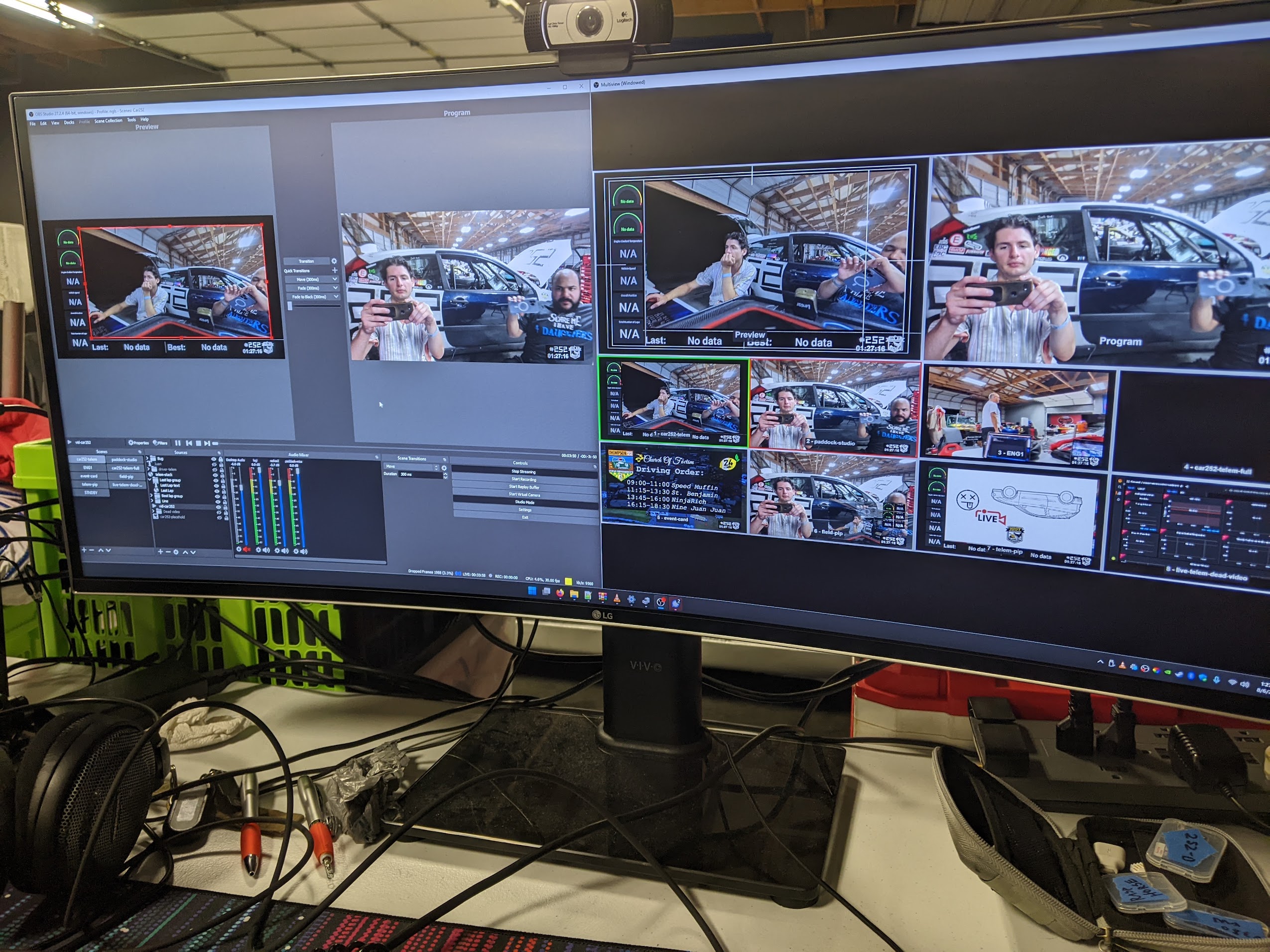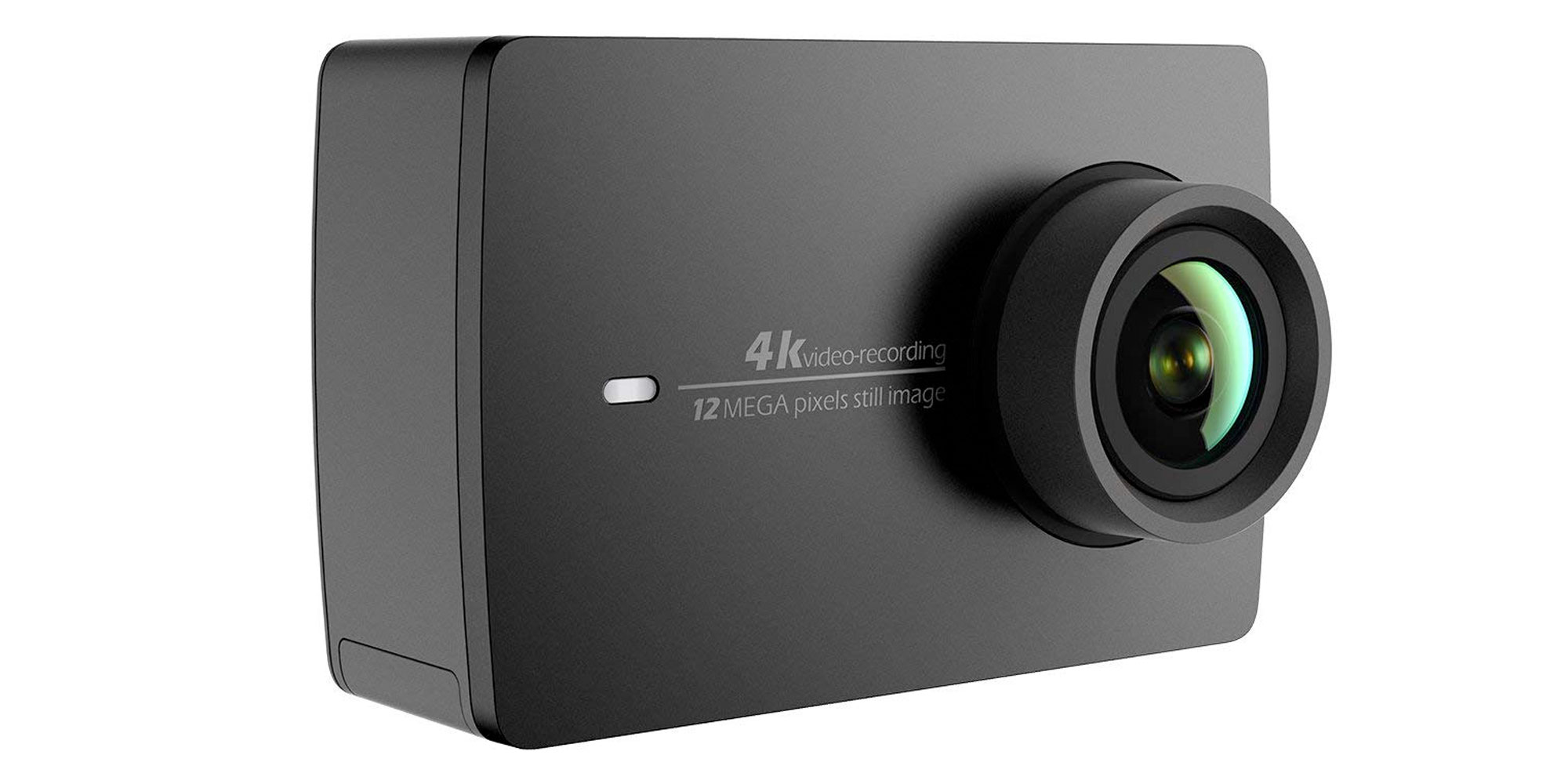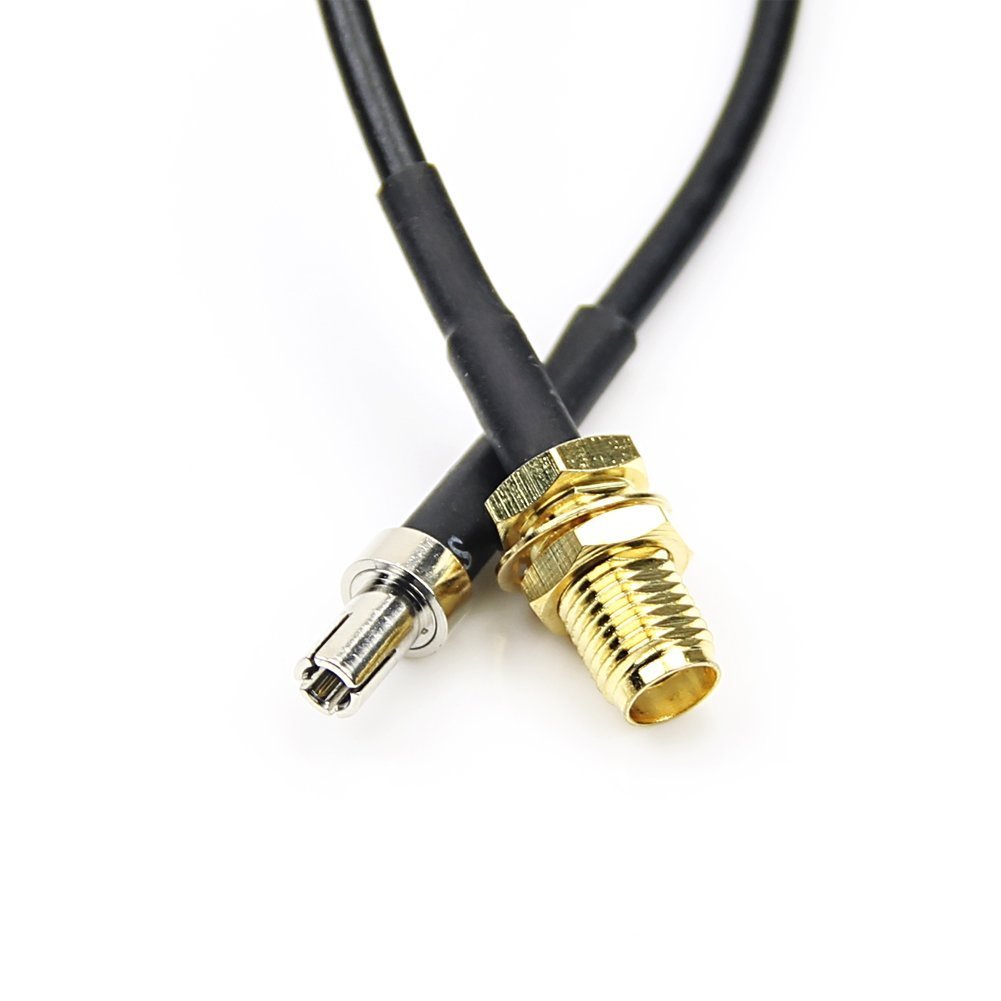¶ OBS & NGLS
Full race broadcast, commentary, music, chyron, field units, and muxing are handled by OBS configs held in NGLS.
This embed above is from our home track, Thompson, CT, the year we did a full on-site live broadcast event. This event is a very challenging one. The facilities are relatively austere, there are only a handful of garages and much of the paddock is simply open asphalt, with long slow portions of paddock area separated from track access. High speed internet is not available, and we don't have microwave or satellite trucks. Finally the event is usually dangerously hot and humid, and the race community collectively remembers monsoon season.
Rich did a fantastic job for his shift, and this was a really fun event to run. Despite all the pre-production and testing there are plenty of gaffs captured in the few minutes run up to the green flag. Echoey double audio whenever the announcers are up persists for almost a quarter hour after the green flag. Occasional editing on the program feed occurs. Race monitor took their time with this one, they deal with the same challenges we do.
¶ Radio Patch
It's barely noticable but the digital radios used between Church Control and Car 252 are patched in during the 2022 CT broadcast. This was by way of a donor listener radio and supporting audio interface.

Running a remote feed allows a bunch of fancy useless stuff and gives you a place to sit that makes you feel important. OBS is not special.
¶ Key takeaways:
- Announcers are fun; they break up a lot of the monotony that pulls a non-crew viewer away.
- Having a clock on-screen with system time helps a lot with scrubbing through after the fact.
- Thompson, CT is the worst place to try to do a broadcast like this.
- Running all this over LTE sucks,
- but it works really well and if you set it up correctly is automatic and self-healing, which is huge.
¶ Hardware Requirements
Church of Focism live video is a long running evolution of a few systems. The core hardware required is as follows:
-
Netgear Nighthawk M1 mobile router/hotspot

-
SIM card w/ LTE service
-
Yi 4K Action

- External Antennas (TS9 connector)
The specific action cam model/sub-model is vitally important, as in later steps we're going to be putting custom configuration onto the camera to ensure network connection and force the camera to start broadcasting by default on startup.
The Netgear M1 was selected for large battery capacity, and external antenna connectors. Range and connectivity are huge challenges in race environments; roaming can be challenging and metal garages or other facilities can severly impact connection quality.

The router requires a TS9 connector. TS9 is the small silver connector pictured above on the left.
¶ YouTube Live
Select "Go Live" from the "Create" button menu in the top left. This will open YouTube studio and start to schedule a live stream. The RTMP server URLs and stream key are what's important here.
¶ Yi Configuration
We're going to need configuration from this repo.
Copy the files in the project and open them up/edit to suit your taste.
- wifi_sta.conf needs the WiFi network information from the Netgear filled into it
- rtmp_info.conf needs the stream configuration from YouTube
These files should be filled out and then placed on the root of the SD card. Test to ensure network connection and streaming begins at boot.
¶ Cooling and Power
Race sessions are almost always 6+ hours, and unless you only want to stream ~30 minutes of the race, your router and camera will need to be wired to onboard power. This means you need high quality cables, consistent power, and zip ties to retain the cables in their locations. Vibrations and high speed turns will easily work a cable loose, and remember you're not allowed to adjust things in the hot pit.
Charging constantly produces a significant amount of heat, for both the camera and router. This alone can result in thermal shutdown of the devices, but placing the devices under the windshield or other windows can roast them with simple sunlight as well.
If you have access to a 3D printer this part will mount the router and a fan.